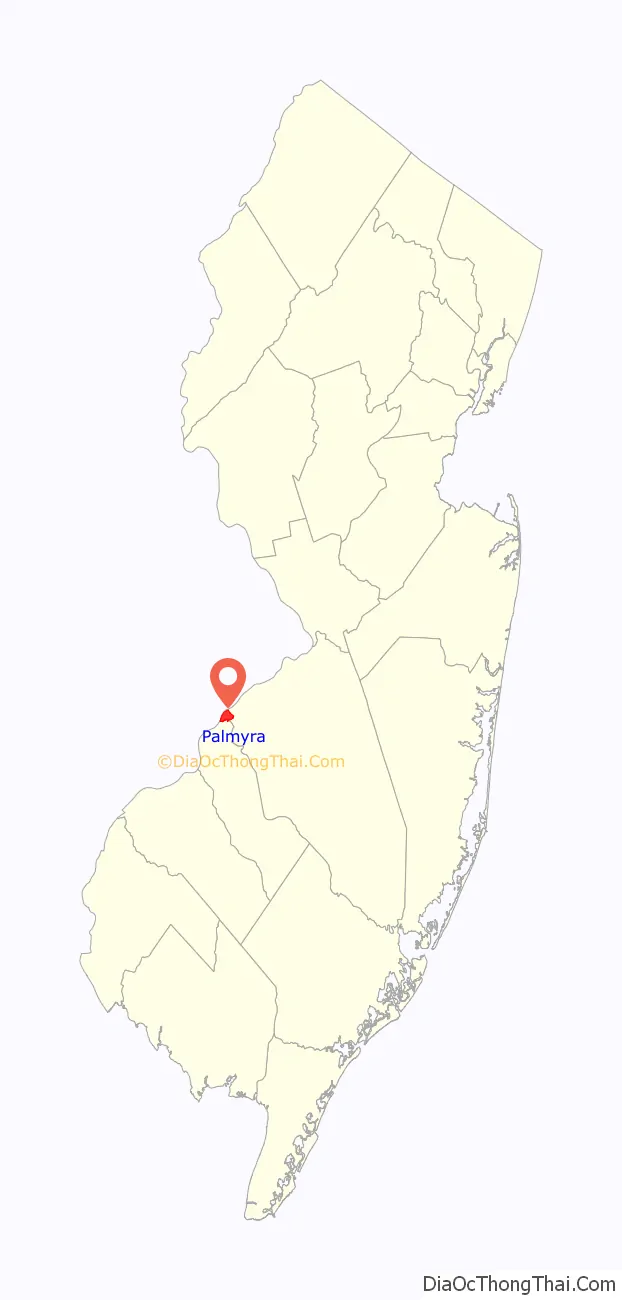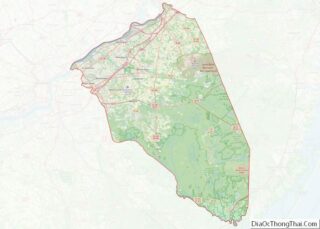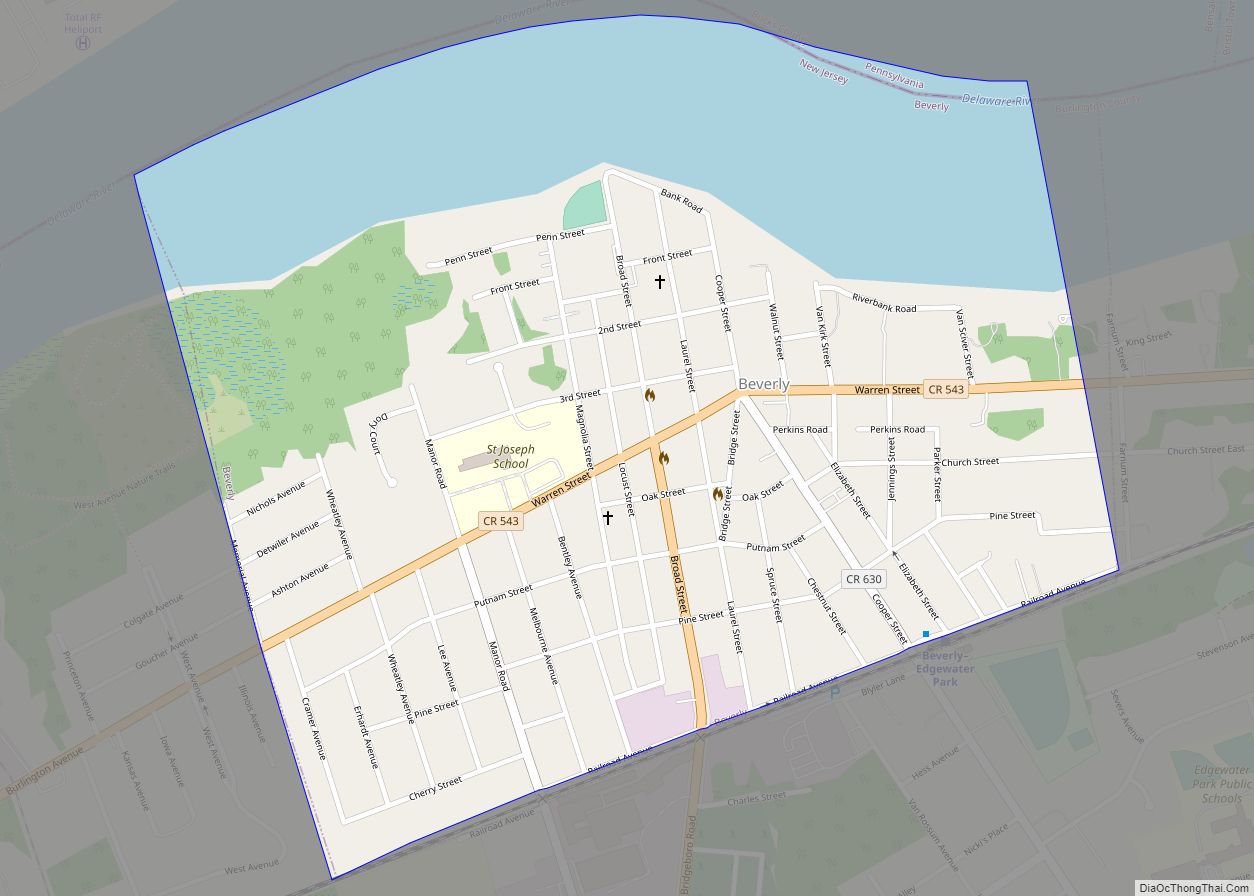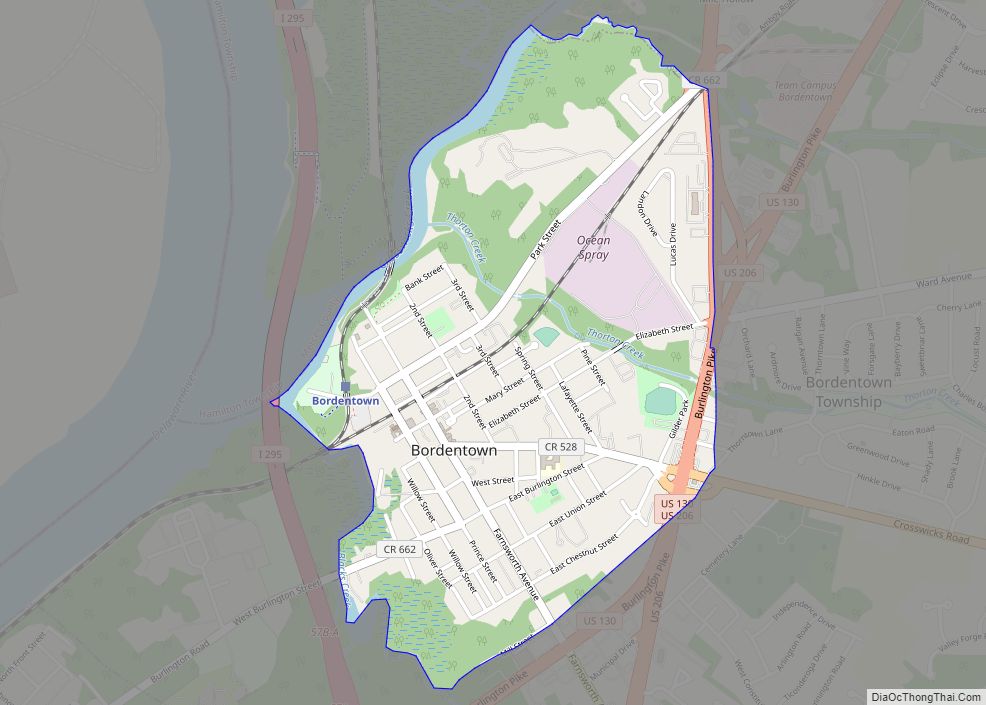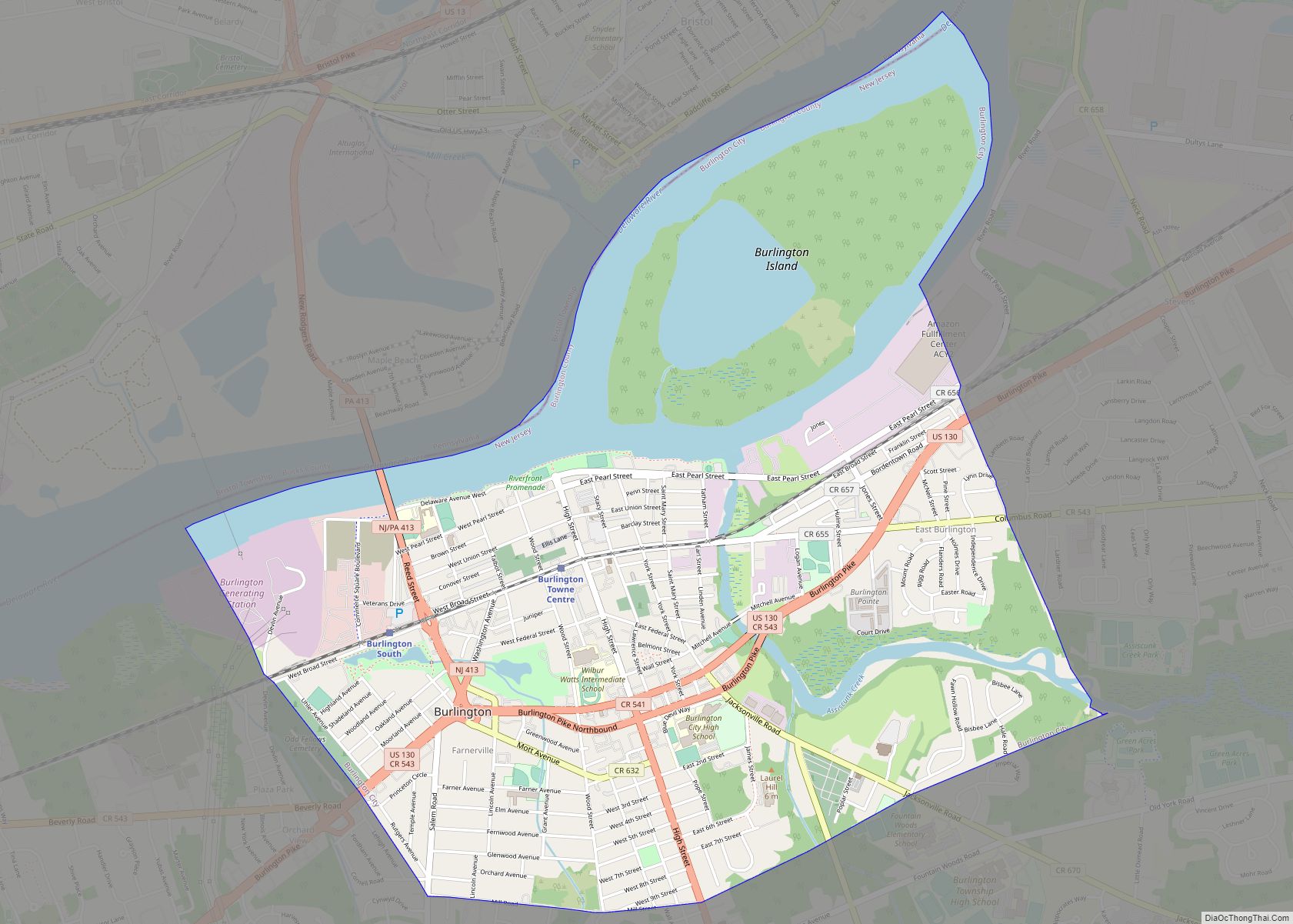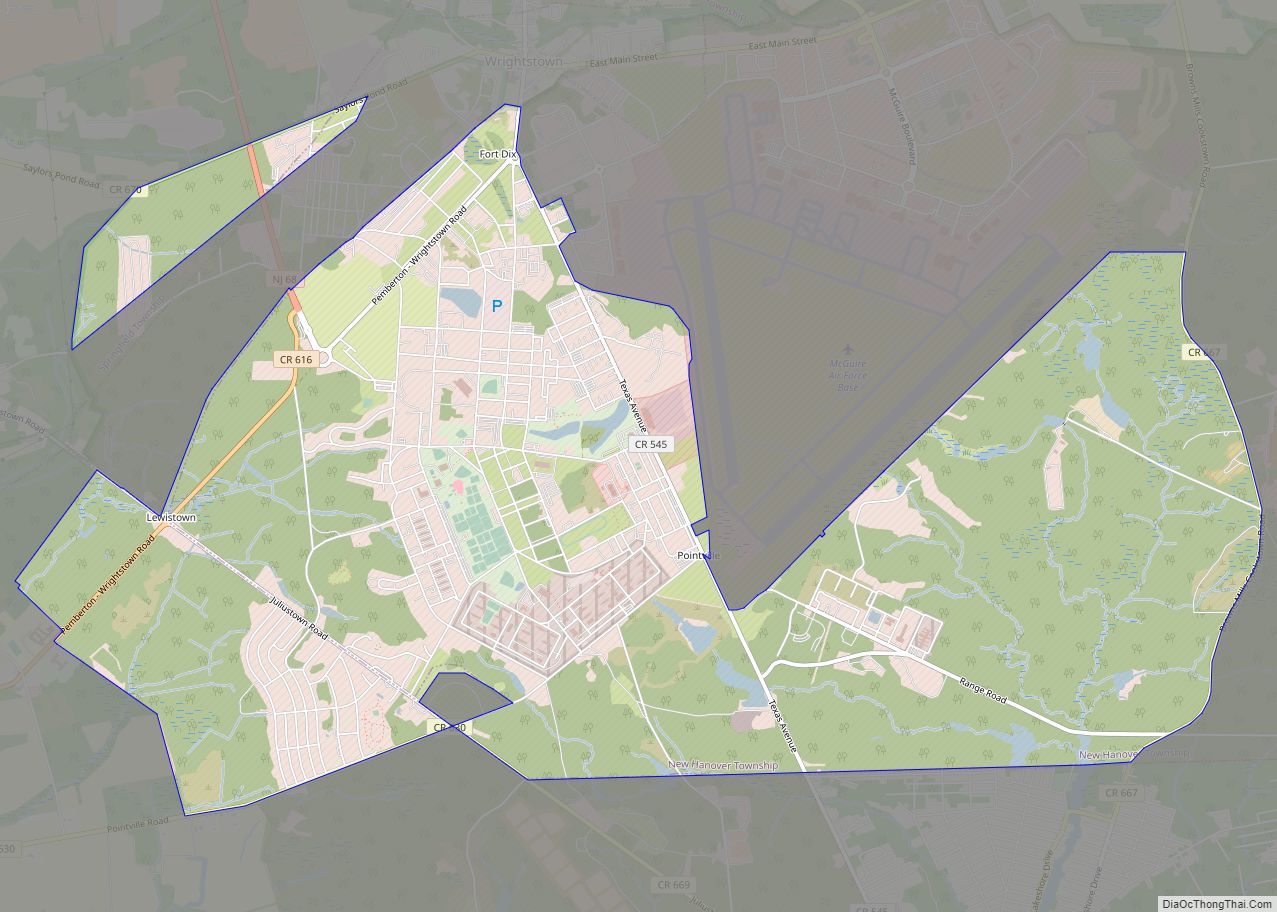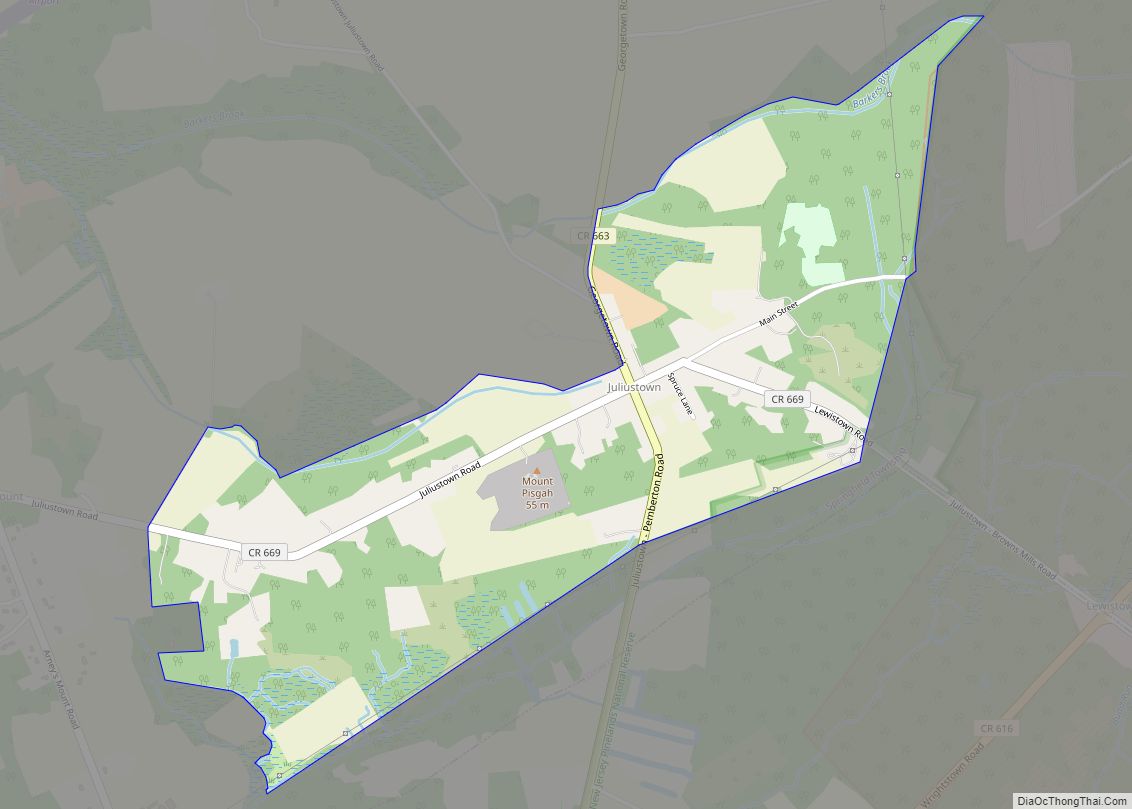Palmyra is a borough in Burlington County, in the U.S. state of New Jersey. As of the 2020 United States census, the borough’s population was 7,438, an increase of 40 (+0.5%) from the 2010 census count of 7,398, which in turn reflected an increase of 307 (+4.3%) from the 7,091 counted in the 2000 census, which had in turn increased by 35 (+0.5%) from the 7,056 counted in the 1990 Census. The borough, and all of Burlington County, is a part of the Philadelphia–Reading–Camden combined statistical area and the Delaware Valley.
Palmyra was originally incorporated as a township by an act of the New Jersey Legislature on April 19, 1894, from portions of Cinnaminson Township and Riverton. On February 20, 1923, Palmyra was reincorporated as a borough.
| Name: | Palmyra borough |
|---|---|
| LSAD Code: | 21 |
| LSAD Description: | borough (suffix) |
| State: | New Jersey |
| County: | Burlington County |
| Incorporated: | April 19, 1894 |
| Elevation: | 7 ft (2 m) |
| Total Area: | 2.54 sq mi (6.58 km²) |
| Land Area: | 1.85 sq mi (4.79 km²) |
| Water Area: | 0.69 sq mi (1.79 km²) 27.28% |
| Total Population: | 7,438 |
| Population Density: | 4,022.7/sq mi (1,553.2/km²) |
| ZIP code: | 08065 |
| Area code: | 856 exchanges: 303, 726, 829, 786 |
| FIPS code: | 3455800 |
| GNISfeature ID: | 0885339 |
| Website: | www.boroughofpalmyra.com |
Online Interactive Map
Click on ![]() to view map in "full screen" mode.
to view map in "full screen" mode.
Palmyra location map. Where is Palmyra borough?
History
The area that is now Palmyra was settled in the late 17th century by Swedes, marking the northernmost border of New Sweden. A farmhouse built in 1761 by the third generation settlers still remains as the oldest house in Palmyra. Farming was the primary use of land in Palmyra and the surrounding area until after the construction of the Camden and Amboy Railroad in 1834 with a station in the area, after which railroad workers built homes on lots they purchased along the railroad right of way. The community was originally known as Texas, but a local landowner, Isaiah Toy, a descendant of the original Swedish settlers and a stockholder in the Camden and Amboy Railroad, who wanted to have a post office established in the community, convinced the railroad to change the name of the station in 1849 to Palmyra, which came from his love of ancient history. Palmyra was the name of an ancient trading center located in central Syria. The post office was established in 1851. Palmyra, along with Bordentown, Burlington, Moorestown Township, and Mount Holly Township, established its high school in the late 1890s, making it one of the oldest high schools in Burlington County and in New Jersey.
The community was laid out in 1850, when Joseph Souder’s land was broken up into building lots to pay his debts, with the street names matching those of Center City, Philadelphia—Market, Arch, Race, and Vine (from south to north), and Front Street and numbered streets from the Delaware River. What is now Palmyra was part of Chester Township (now Maple Shade Township), which was created in 1694 and was one of the original 104 townships in New Jersey incorporated in 1798. Palmyra became a part of Cinnaminson Township when that township was set off from Chester in 1860. Palmyra Township was set off from Cinnaminson in 1894, and Palmyra was incorporated as a borough in 1923.
Palmyra Road Map
Palmyra city Satellite Map
Geography
According to the United States Census Bureau, the borough had a total area of 2.54 square miles (6.58 km), including 1.85 square miles (4.79 km) of land and 0.69 square miles (1.79 km) of water (27.28%).
Unincorporated communities, localities and place names located partially or completely within the borough include West Palmyra.
The borough borders Cinnaminson Township and Riverton in Burlington County; Pennsauken Township in Camden County; and Philadelphia, across the Delaware River in Pennsylvania.
The city is connected to the Tacony section of Philadelphia via Route 73 by the Tacony-Palmyra Bridge, which is named for the two communities connected by the bridge. The bridge was completed in 1929 at a cost of $4 million.
In 1999, a 250-acre (100 ha) nature park, Palmyra Nature Cove, was opened along the banks of the Delaware which borders Palmyra on the west; in addition to serving as a bird sanctuary, the park offers educational programs for schools and hiking trails for walkers. The park is open from dawn to dusk; no pets or bicycles are allowed.
See also
Map of New Jersey State and its subdivision: Map of other states:- Alabama
- Alaska
- Arizona
- Arkansas
- California
- Colorado
- Connecticut
- Delaware
- District of Columbia
- Florida
- Georgia
- Hawaii
- Idaho
- Illinois
- Indiana
- Iowa
- Kansas
- Kentucky
- Louisiana
- Maine
- Maryland
- Massachusetts
- Michigan
- Minnesota
- Mississippi
- Missouri
- Montana
- Nebraska
- Nevada
- New Hampshire
- New Jersey
- New Mexico
- New York
- North Carolina
- North Dakota
- Ohio
- Oklahoma
- Oregon
- Pennsylvania
- Rhode Island
- South Carolina
- South Dakota
- Tennessee
- Texas
- Utah
- Vermont
- Virginia
- Washington
- West Virginia
- Wisconsin
- Wyoming

